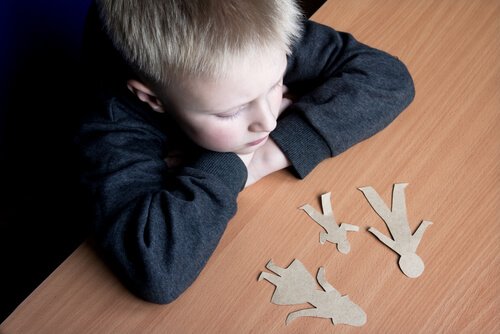Joint Custody: What Does It Mean?

For many families, joint custody is the best option when it comes to divorce, as it allows children to spend time with both their parents.
Divorce is one of the most difficult things that can happen to a couple. It’s almost always a last resort.
For children, who often just want to see their parents together forever, a separation can seem even more unfair and confusing.
Children aren’t the ones responsible for the situation. It’s important for parents to act with as much maturity as possible to keep their children’s suffering to a minimum.
Get to know everything about the legal agreement that could define the future shape of your family in this article.
What is joint custody?
Joint custody is a legal agreement establishing that both parents will be responsible for bringing up their children, even though the marriage has been dissolved.
This means sharing time, obligations and rights to the child. The agreement will clearly establish that the costs involved in childrearing are the responsibility of both parents.
Traditionally, when a couple separated, it was the mother who took full custody of the children, while the father received visitation rights.
This situation isn’t generally ideal for children, who need to spend far more time with their father.
When parents share custody, meanwhile, the child spends around the same amount of time with both parents. In this way, nobody is left out.
How long the child spends living with each parent is up to each family to define. Each parent may have custody for alternate months, weeks or days.

What are the requirements for joint custody?
Some experts have argued that joint custody is less traumatic for children, because neither of the parental figures is absent from their daily life.
Of course, shared custody isn’t suitable for every family. For an arrangement like this to work, both partners must maintain a cordial relationship as parents.
Additionally, parents who share custody generally live close together. In some cases, parents who live in different cities are able to arrange for children to live with one parent or the other for months at a time.
The law is not able to cover every scenario. The family court judge cannot set out every detail in the life of the family that is breaking up.
In order for joint custody to work, both parents will need to agree on what is best for their child’s wellbeing.
Another way to look clearly at this legal proceeding is that joint custody doesn’t begin with divorce.
It begins when a couple takes the decision to bring a child into the world. From this moment on, both of them share parental responsibility.
Reaching a suitable shared custody agreement doesn’t need to be overly complicated, as long as both parents are able to agree on what is best for their children.
Advantages of joint custody
Sharing custody has several advantages for families:
- Joint custody respects children’s right to have ongoing contact with both parents.
- It meets the emotional need for a mother and father figure.
- The decision to share custody may reduce tension between parents.
- Children don’t feel they need to choose between their mother and their father.
- It reduces the risk of children experiencing feelings of guilt about the divorce.
- It improves communication between parents.
- Neither parental figure is more important than the other in the children’s lives.
- Since parents must communicate openly, sharing custody increases the chances of the children accepting and understanding the separation.
- It reduces the likelihood of the children becoming estranged from one parent.

Disadvantages of joint custody
The main disadvantages of sharing custody include:
- The process of adapting to living between two homes.
- The child will need to have their essential belongings at both of their parent’s houses.
- Organizing routines can be difficult when the parents are going through a breakup.
- Both parents will need to respect the child’s normal schedule. Good communication between both parents is key. Constant changes to a child’s everyday routine can lead to emotional upheaval.
Reaching a suitable shared custody agreement doesn’t need to be overly complicated, as long as both parents are able to agree on what is best for their children.
Despite the pain involved in the breakdown of a marriage, communication with your former partner will be absolutely essential for shared custody to work.
The fact that the relationship didn’t work out doesn’t mean that you and your partner won’t be able to be good parents for your little ones.
Sharing custody is one way to handle this situation that has major benefits for everyone involved.
All cited sources were thoroughly reviewed by our team to ensure their quality, reliability, currency, and validity. The bibliography of this article was considered reliable and of academic or scientific accuracy.
- Catalán Frías, M. J. (2011). La custodia compartida. Revista Derecho y Criminología, (1).
- Silva Gavilánes, A. E. (2016). La custodia compartida y el interés superior de los niños y niñas (Bachelor’s thesis).
This text is provided for informational purposes only and does not replace consultation with a professional. If in doubt, consult your specialist.
